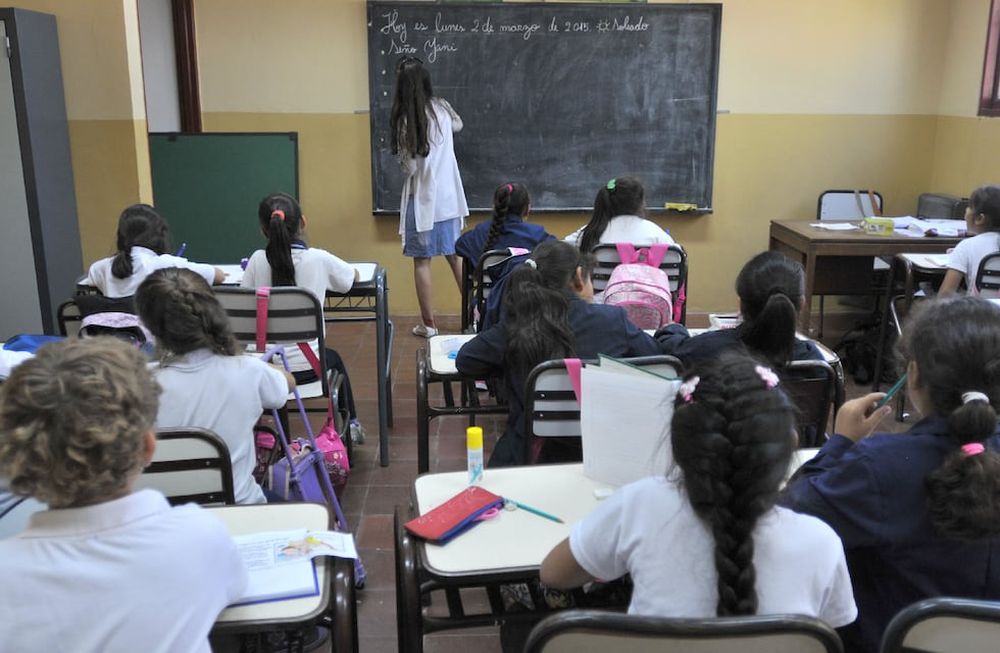Significant improvement in reading in Mendoza's primary schools: the number of students at the critical level has dropped to 18%.

In three years, the proportion of children at a critical reading level went from 27% to 18%.
Similarly, for the first time, the percentage of students who do not pass the basic level has fallen below 50%, according to data recorded by the General Directorate of Schools ( DGE ).
This is still a worrying proportion considering that half of the enrollment struggles with reading, a key learning skill. However, it's worth noting that improvements are being seen.
They are also observed in the proportion of students above the basic level, which increased from 45% in the first measurement in 2022 to 53% in the last. Students with an advanced level increased from 15% to 20%.
The census covered a total of 867 primary schools with a population of 187,473 students. A total of 393 secondary schools were included, with a total of 315,256 students surveyed across both levels.
In secondary school, the situation seems to be much more difficult to address. There are improvements there, but they are small or practically nonexistent.
Gender, human rights, and the environment are part of the 2019 Mendoza school year.

The proportion of students who do not pass the basic level has remained virtually unchanged since the first measurement. The figure rose from 52% in 2022 to 53% in the latest measurement.
But there, the percentage of students at the critical level increased from 22% to 19%. Meanwhile, students at the advanced level in reading increased from 13% in 2022 to stagnating at 12% in recent years.
Third grade improves in readingThird grade is a key year, both for Mendoza's strategies and at the national level. It is a grade focused on the fact that children are just leaving primary school and are expected to already have certain essential skills to continue on to the rest of their education.
It is precisely at this level that it was found that almost half of Argentine students nationwide do not reach the minimum reading level, which means they do not understand what they read. According to data from the Regional Comparative and Explanatory Study (ERCE), this affects 46% of students, which triggered a national literacy campaign.
It is precisely in the focus groups where the greatest improvements in the local census are observed.
In third grade , the percentage of students at the critical level at the beginning of the year fell from 32% in 2022 to 20% in 2025. Meanwhile, the proportion of students at the advanced level doubled, rising from 11% in 2022 to 22% this year. This proportion is also the highest on record.
A similar result can also be seen in the follow-up of the same cohort: among students who were in second grade in 2024, 34% had a critical level, while when they entered third grade this year, only 20% had reached the advanced level. The number of students in the advanced level also doubled, rising from 10% to 22%.
Similar results are seen in sixth grade, another key year, which went from 20% of students with a critical level in 2022 to 11% this year; at the advanced level, the percentage went from 22% to 28%.
The censusThe census began to be implemented in three annual measurements and for all students starting in 2022. Previously, it had been conducted on a sample basis in some groups.
From the outset, the DGE demonstrated positive results, demonstrating an effective strategy for addressing the main challenges facing Argentine students in basic skills. The Mendoza Legislature then approved the Strategic Literacy Plan, which aims to guarantee literacy as a state policy.
Tadeo García Zalazar: "The unity of Radicalism is something that Peronism lacks."

"We had a very good start to the year compared to previous years. Critical levels decreased and satisfactory levels increased," stated Tadeo García Zalazar, Minister of Education, Culture, Children, and the General Directorate of Education. He highlighted the policies implemented, such as the provision of materials, increased teacher training , and targeted strategies.
"For the first time, we can follow a cohort and observe sustained improvements," emphasized Undersecretary of Education Claudia Ferrari. She announced that the next step will be to strengthen oral and written proficiency .
Comprehension: 7 out of 10 children have problems interpreting what they readAfter mass-promoting reading surveys, the school administration decided to take a step further and aimed to assess reading comprehension in the key grades : third and sixth grades of primary school and the first year of secondary school.
In this regard, the results were less ebullient . While improvements can be seen, it is also clear that there are significant challenges to be addressed.
In third grade, 59% answered more than 60% of the assessment correctly. Meanwhile, in sixth grade, 59% answered 50% of the assessment correctly, or half of the assessment content.
However, in third grade, only 28% had good results in interpretation. This means that 7 out of 10 students in that grade have trouble interpreting what they read. That proportion rose to 50% in sixth grade.
Meanwhile, six out of 10 children achieve good results in reflection and evaluation, which means that four out of 10 do not achieve them.
losandes





